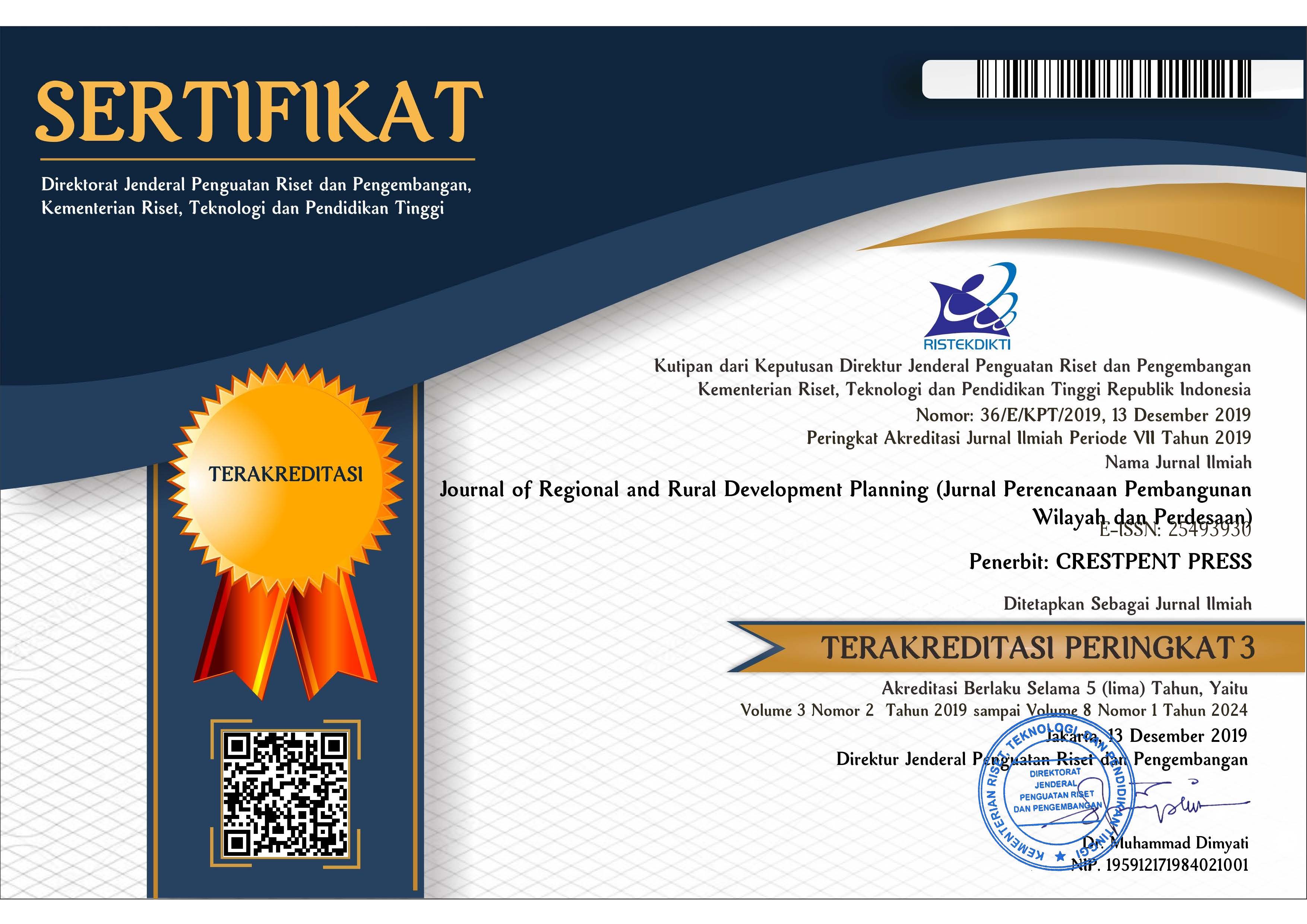Can Subaltern Exist? Reinterpreting the Issue of Subalternity (Case Study of Blimbingsari Village - Jembrana Regency and Pegayaman Village - Buleleng Regency)
Abstract
The objective of this study is to further elucidate a significant inquiry posed by Gayatri Spivak, namely, the ability of the subaltern to articulate their voice. This inquiry's significance arises within the context of social interactions, where there are discernible patterns of social dominance. Is it possible for a social group to survive without the active participation and expression of its members? This study aims to investigate how a village can persist within a social, cultural, and political framework that actively conceals its presence. The aforementioned pressure is commonly acknowledged as an inherently social phenomenon, indicating the presence of a mechanism of social hegemony. The hegemonic process is enacted through the implementation of village norms, particularly about customary villages (desa adat). The majority of villages in Bali adhere to a dual system of governance, consisting of office villages (desa dinas) and customary villages desa adat. Nevertheless, it is worth noting that the focus of this research lies solely on two specific villages, both of which adhere to a single type of governance known as the official village. The two villages under consideration are Blimbingsari in the Jembrana district and Pegayaman in Bali's Buleleng district. Both communities remain independent settlements in Bali to this day. Nevertheless, the dynamics and obstacles that exist are not straightforward. This research tries to listen to the voices of the subaltern and classifies them into four main issues, namely: 1) cultural politics; 2) political economy; 3) Ideology; 4) Conscientization. Through these four issues, an understanding of how these two villages continue to exist amid existing social harmonization is obtained.
References
Andiani, N. D., Arismayanti, N. K., Sani, E. F. A., & Wiarti, L. Y. (2022). Pola dan Strategi Akulturasi Masyarakat Islam-Jawa dengan Hindu-Bali di Desa Pegayaman Bali Utara. Journal of Bali Studies, 11(2), 370–386.
Apriani, L. R., & Erliyana, A. (2020). Desa Adat Provincial Law: Existence Strengthening Or Power Flexing? Indonesia Law Review, 10(1). https://doi.org/10.15742/ilrev.v10n1.616
Bachtiar, Y., Bagus Wirawan, A. A., & Putu Mahyuni, I. A. (2022). Eksistensi Komunitas Muslim Dan Hindu. Jurnal Pariwisata PaRAMA : Panorama, Recreation, Accomodation, Merchandise, Accessibility, 3(2), 57–65. https://doi.org/10.36417/jpp.v3i2.508
Bilton, C., & Soltero, G. (2020). Cultural policy as mythical narrative. International Journal of Cultural Policy, 26(5). https://doi.org/10.1080/10286632.2019.1624736
Darder, A. (Ed.). (2019). The Colonizing Interpretative Research: A Subaltern Methodology of Social Change. Routledge.
Fauziyah, F. (2022). Otonomi Desa Adat Pakraman Berdasarkan Perda Provinsi Bali Nomor 4 Tahun 2019 Tentang Desa Adat Di Bali. MIMBAR YUSTITIA. https://doi.org/10.52166/mimbar.v5i1.2776
Gayatri Chakravorty Spivak. (1994). Colonial Discourse and Post-Colonial Theory - A Reader (Patrick Williams and Laura Chrisman (Ed.)). Routledge.
Guha, R. (1997a). A Subaltern Studies Reader, 1986-1995. 332. http://books.google.com/books?id=Aa7ye_nJ5l0C
Guha, R. (1997b). Dominance without Hegemony in Colonial India. In Dominance without Hegemony.
I Wayan Gede Suacana, I Nyoman Wiratmaja, I. W. S. (2022). Perkembangan Dualitas Pemerintahan Desa di Bali. Literasi Nusantara.
Ketut Suyaga Ayub. (2014). Blimbingsari The Promise Land - Gereja Kristen Protestan di Bali. Penerbit Andi.
Kim, H. K. (2020). The Development of Hegemony: From Gramsci to Guha. Journal of School Social Work, 78. https://doi.org/10.37924/jssw.78.7
Lassalle, M. (2022). Gramsci And The Problem Of Right. A Critical Approach. Athenea Digital, 22(1). https://doi.org/10.5565/rev/athenea.2924
Merli, P. (2010). Antonio Gramsci, Prison notebooks. International Journal of Cultural Policy, 16(1), 53–55. https://doi.org/10.1080/10286630902971603
Nyoman Widastra, P., Ngurah Anom Kumbara, A. A., Bagus Wirawan, A. A., & Gede Mudana, I. (2020). The Customary Village Hegemony in Bali Towards Minority Groups. International Journal of Multicultural and Multireligious Understanding. https://doi.org/10.18415/ijmmu.v7i7.1866
Rosalind C.Moris (Ed.). (2010). Can the Subaltern Speak?: Reflection on The History of an Idea. Columbia University Press.
Setiawan, R. (2018). Subaltern, Politik Etis, dan Hegemoni dalam Perspektif Spivak. Jurnal POETIKA, 6(1), 12. https://doi.org/10.22146/poetika.35013
Sunarya, I. W. (2022). Blimbingsari Selayang Pandang.
Suryawan, I. N. (2020). Desa Mawacara, Negara Mawatata: Bali’s Customary Village-Based State Policies in the Time of the Covid-19 Pandemic. Jurnal Politik, 6(1), 37. https://doi.org/10.7454/jp.v6i1.328
Tunas, I. K. N. H. (2022). Desa Blimbingsari Menuju Desa Wisata. Alfa Omega.
Turker, N., Gelgel, N. M., Suryawati, I. G., & Damasemil, C. (2022). Akulturasi Komunikasi Antar Budaya pada Hari Raya Besar Umat Kristen Bali di Desa Blimbingsari, Jembrana. Jurnal Ilmu Komunikasi : MEDIUM, 3(2), 1–12.
Waren, C. (1993). Adat and Dinas Balinese Communities in the Indonesian State. Oxford University Press.
Williams, P., & Chrisman, L. (2020). Gayatri Chakravorty Spivak Can the Subaltern Speak? In Colonial Discourse and Post-Colonial Theory. https://doi.org/10.4324/9781315656496-13
Copyright (c) 2024 Journal of Regional and Rural Development Planning (Jurnal Perencanaan Pembangunan Wilayah dan Perdesaan)

This work is licensed under a Creative Commons Attribution-ShareAlike 4.0 International License.




.png)














